Key takeaways
- The Wendigo legend symbolizes the consequences of greed and isolation, serving as a warning about the darker aspects of human nature.
- Researching paranormal topics requires a blend of academic insights and oral histories to capture the full essence of the legends.
- Engaging with Indigenous voices and community members enriches the understanding of the Wendigo, emphasizing the importance of cultural context.
- Approaching legends like the Wendigo with respect and an open mind allows for deeper exploration of human fears and collective memory.

Understanding the Wendigo Legend
The Wendigo legend has always fascinated me because it captures a deep, almost primal fear of hunger and isolation. What struck me most is how this creature, born from Algonquian folklore, symbolizes more than just a monster—it embodies the terrifying consequences of greed and desperation. Have you ever wondered why some legends stick with us so powerfully? For me, the Wendigo’s connection to human nature makes it unforgettable.
Digging into the stories, I realized the Wendigo is described as this gaunt, skeletal beast with a hunger that can never be satisfied. It’s not just about physical hunger but a metaphor for insatiable greed and moral decay. This idea resonated with me deeply, especially considering how those themes still apply today. It made me reflect on how legends serve as warnings, not just entertainment.
One moment stuck out during my research: talking to someone from a community where the Wendigo myth is still alive. Hearing the story firsthand, I could feel the weight of tradition behind the words. It made me ask myself—how do legends like this survive and evolve over generations? For me, that question opened a new path into understanding the Wendigo’s lasting impact.
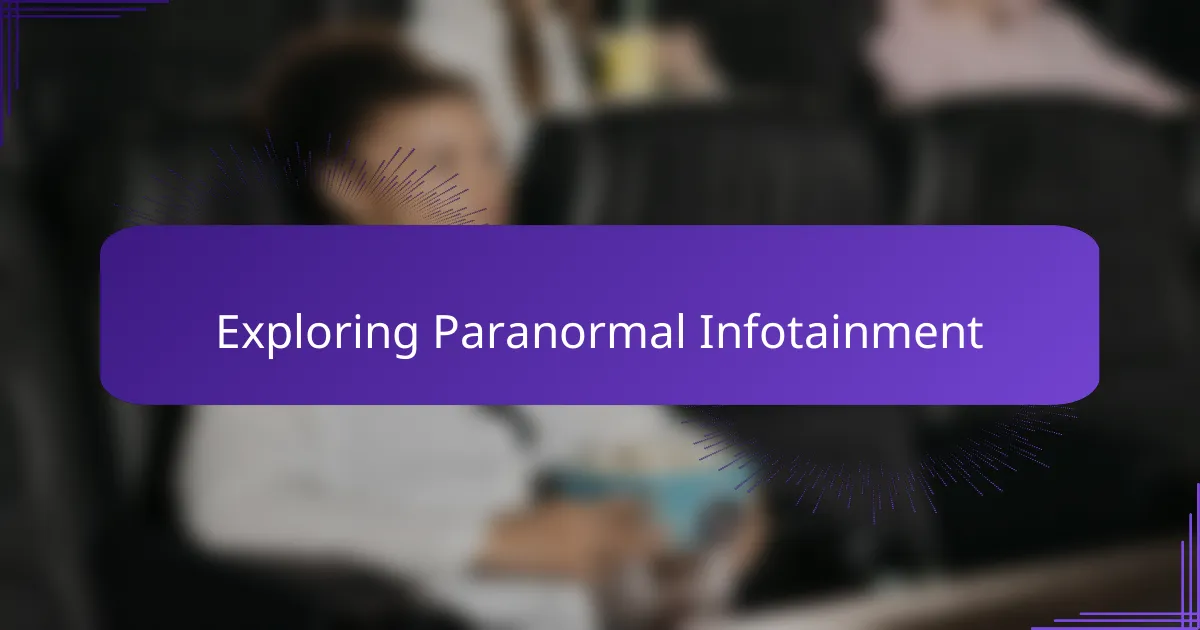
Exploring Paranormal Infotainment
Paranormal infotainment has always intrigued me because it strikes a unique balance between storytelling and the mysterious unknown. It’s not just about scaring people; it’s about connecting us to something larger—something unseen yet deeply felt. Don’t you find it fascinating how these stories can entertain and provoke thought at the same time?
What I’ve learned is that paranormal infotainment creates a space where skepticism meets wonder. As I dove deeper, I noticed how shows and podcasts weave folklore, eyewitness accounts, and historical facts into narratives that feel real and thrilling. This blend keeps me hooked, and honestly, it’s that mix of fact and imagination that makes exploring legends like the Wendigo so captivating.
Sometimes, I catch myself wondering why we’re so drawn to these stories. Is it the adrenaline rush, or something more—like a shared need to explore the unknown? From my experience, paranormal infotainment isn’t just entertainment; it’s a way to engage with cultural fears and hopes, making old legends come alive in surprising ways.
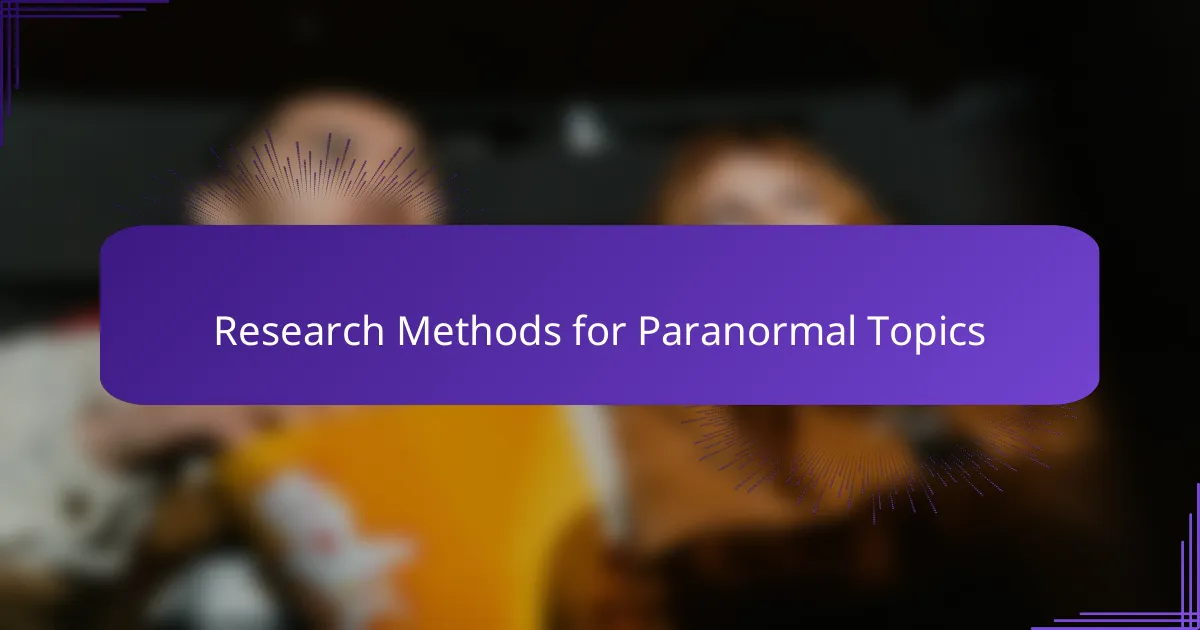
Research Methods for Paranormal Topics
When I first approached paranormal topics like the Wendigo, I quickly realized that traditional research methods alone weren’t enough. I had to blend academic sources with oral histories and firsthand accounts to get a fuller picture. How else could I capture the spirit of a legend that exists both in books and in people’s lived experiences?
I found that using multiple research tools—like folklore archives, interviews, and even field visits—gave me unique insights. For example, listening to stories directly from community members added layers of meaning that no textbook could provide. It made me appreciate how research in paranormal topics involves more than just fact-finding; it’s about honoring tradition and context.
At times, I questioned how to balance skepticism with respect for these stories. Should I treat the Wendigo as myth or as something more? My answer came from embracing the unknown while critically examining the sources. This approach helped me stay open-minded without losing sight of intellectual rigor—a tricky but rewarding path in paranormal research.
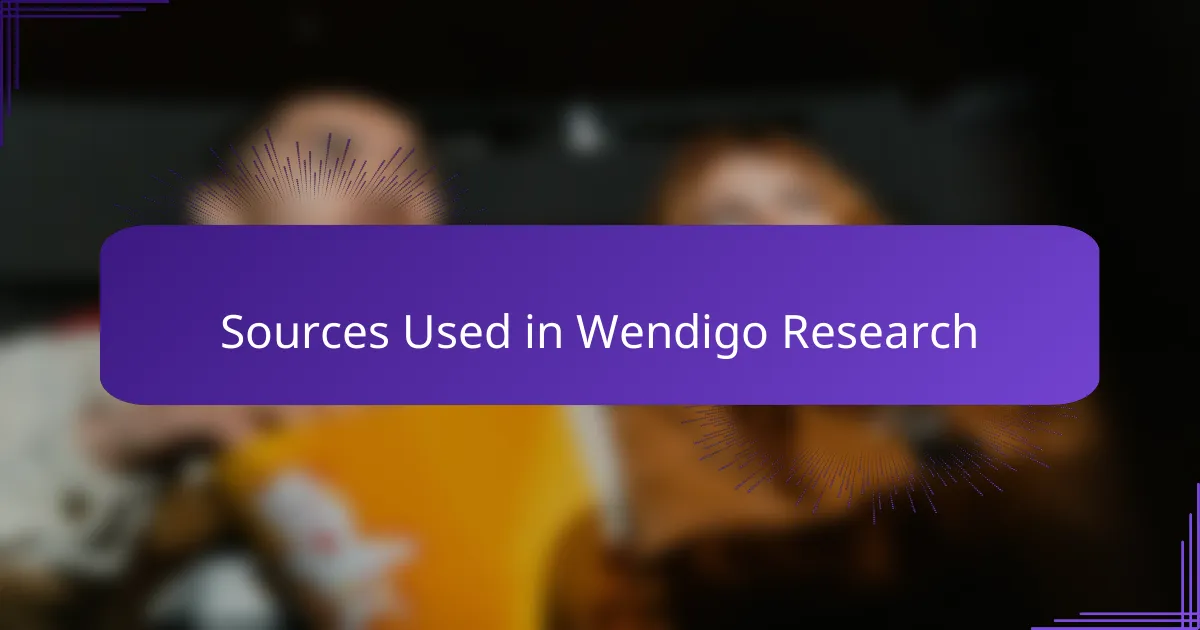
Sources Used in Wendigo Research
Diving into the sources for Wendigo research felt like opening a door to multiple worlds. I leaned heavily on a mix of folklore anthologies and academic papers, but it was the interviews with Indigenous elders that truly brought the legend to life. Have you ever noticed how firsthand stories carry an energy that no written word can quite capture? That’s what shifted my understanding from mere facts to lived experience.
I also explored historical documents and ethnographic studies that traced the Wendigo’s roots through time. These sources offered a framework, grounding the legend in specific cultural and environmental contexts. Yet, it was clear to me that numbers and dates only tell part of the story—the emotional undercurrents and moral warnings woven into the myth require something deeper.
What struck me most was how combining these diverse sources created a richer narrative tapestry. Balancing scholarly research with oral traditions made me ask: how do we honor the origins of such stories while analyzing them critically? For me, sourcing Wendigo knowledge became less about proving its existence and more about understanding the human fears and values it represents.
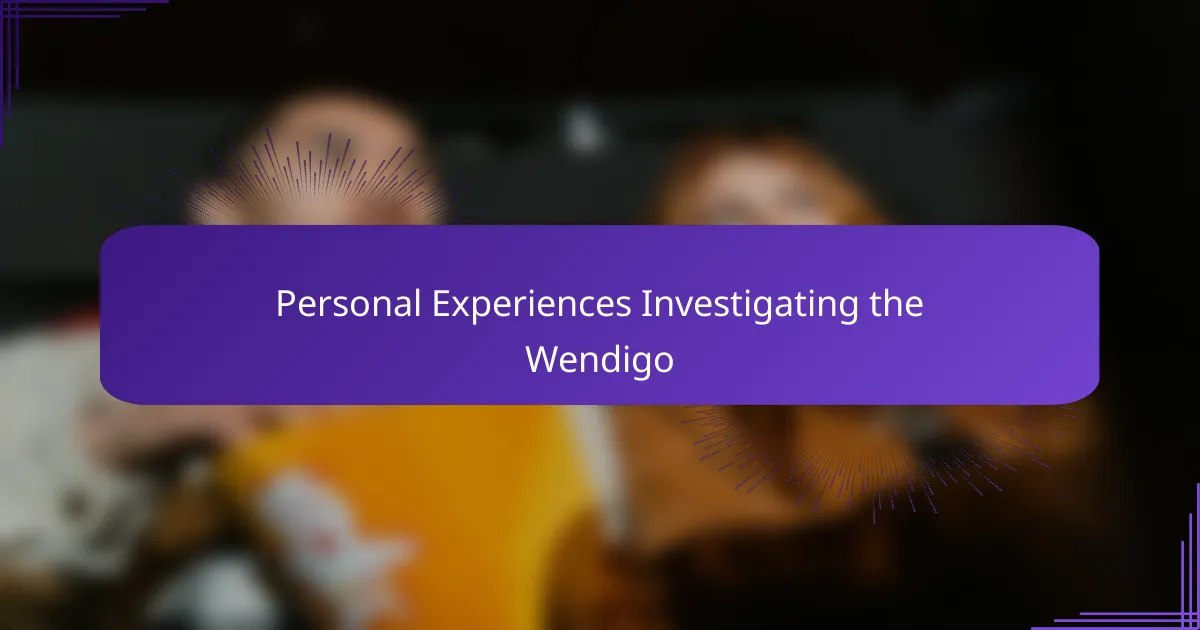
Personal Experiences Investigating the Wendigo
There was one night I’ll never forget, trekking through dense woods where the Wendigo is said to roam. The silence was thick, almost oppressive, and I found myself questioning whether the shadows were playing tricks or if something truly was watching. It’s in moments like that where belief and skepticism blur—have you ever felt that electric tension between fear and curiosity?
During another excursion, I sat quietly near a campfire, listening to an elder recount their personal encounter with what they described as a chilling presence. Hearing the raw emotion in their voice made the legend much more than words on a page—it became a living experience. It made me wonder how much of what we call “paranormal” is tied to memory, culture, and the human need to explain the unexplainable.
Sometimes I’d catch myself doubting everything, yet the atmosphere would shift in subtle ways—a sudden cold breeze, a distant howl—that unsettled my rational mind. Investigating the Wendigo wasn’t just about gathering data; it became a journey through my own thresholds of belief. What do these moments mean, if not that some legends refuse to be fully explained?
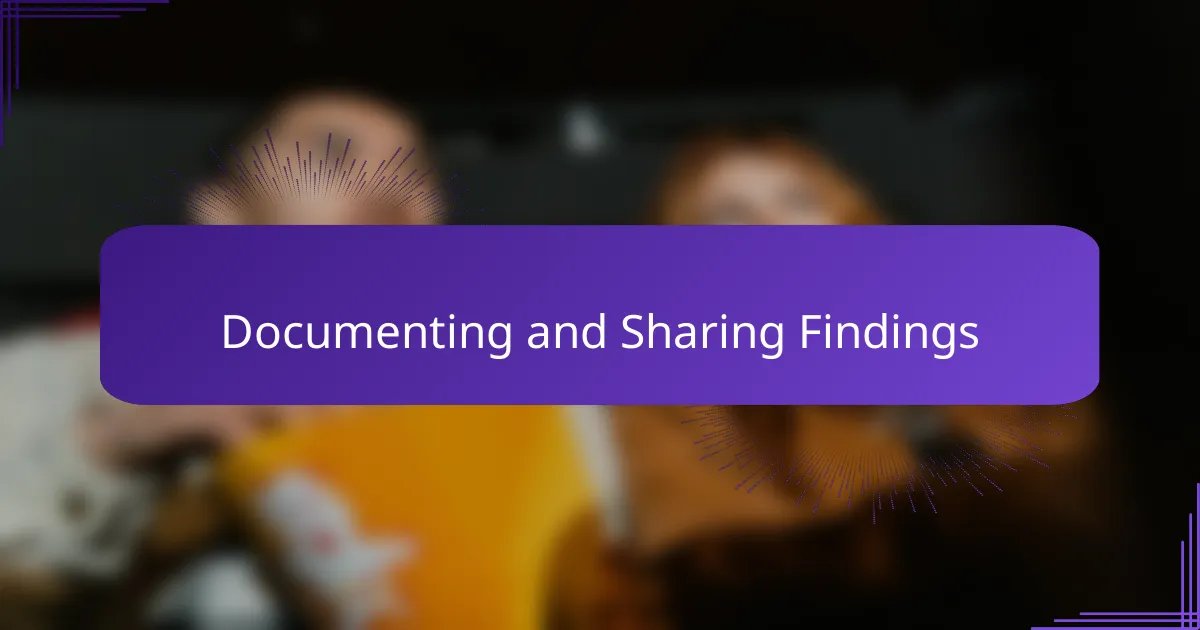
Documenting and Sharing Findings
Writing down my findings felt like piecing together a puzzle where some pieces were deliberately elusive. I made detailed notes, combining quotes from interviews, notes from field observations, and reflections on the themes I encountered. Have you ever struggled to put feelings and facts into words? It was both challenging and rewarding to capture the Wendigo’s story in a way that honored its complexity.
Sharing these findings was another step filled with excitement and caution. I chose to present the research through blog posts and discussion forums where I could engage directly with readers. For me, this interactive exchange brought new perspectives and sometimes even corrected my assumptions, proving that documenting folklore is a living process, not just a static report.
Of course, I wondered how to balance respect for Indigenous voices while opening the conversation to a wider audience. It became clear that transparency about sources and acknowledging the cultural roots was essential. This approach made sharing the Wendigo legend feel less like appropriation and more like a collaborative exploration—one where everyone could learn and reflect together.
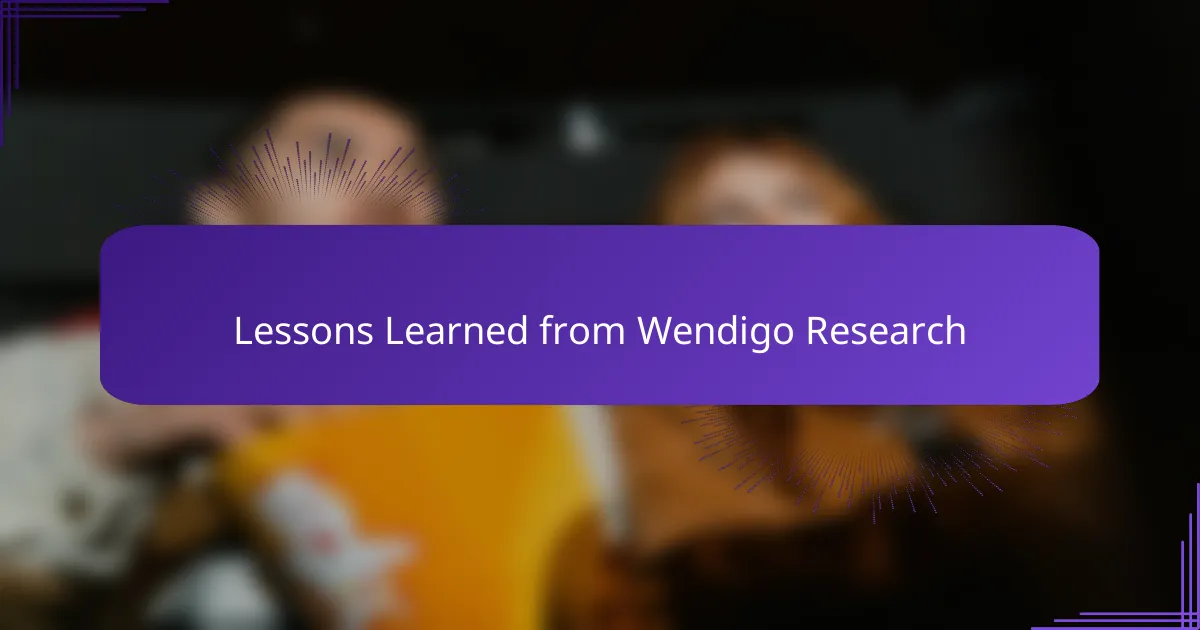
Lessons Learned from Wendigo Research
One lesson that really stuck with me is how important it is to approach the Wendigo legend with both respect and curiosity. I learned that treating it merely as a scary story misses the deeper cultural and moral lessons woven into it. Have you ever noticed how some legends demand more than just surface-level interest? For me, acknowledging this balance transformed my entire research experience.
I also discovered that remaining open to uncertainty is key. At times, I wrestled with skepticism—questioning which details were folklore, which were personal truths—but it became clear that the mystery is part of the Wendigo’s power. This pushed me to accept that not all questions have neat answers, and that’s okay. It made the journey feel less like chasing facts and more like exploring human fear and resilience.
Another takeaway was how vital it is to listen deeply, especially to Indigenous voices who carry this tradition forward. One conversation with an elder resonated so profoundly that it shifted my perspective from outsider to respectful participant. That moment made me ask: how often do we really hear the stories behind the stories? For me, this was the most humbling and rewarding lesson of all.